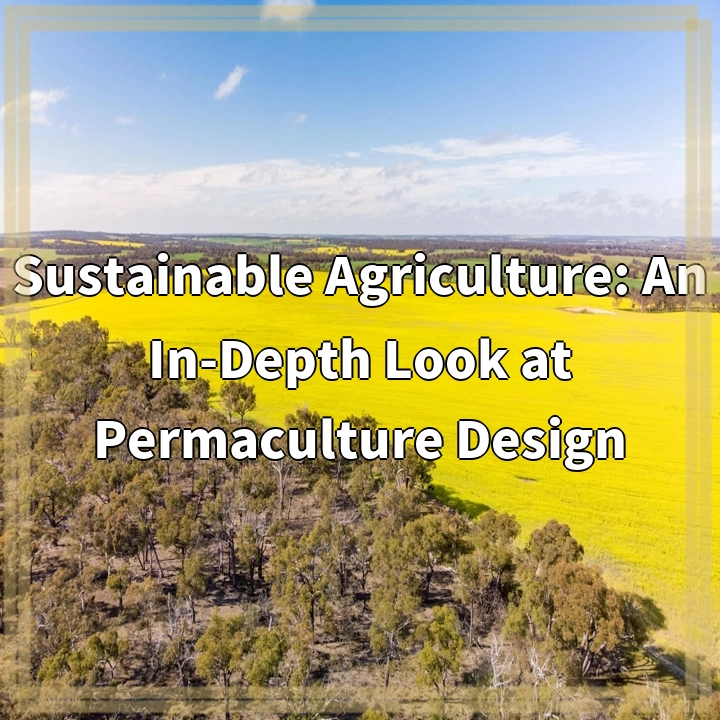
What it is:
Permaculture design is a holistic approach to sustainable agriculture that seeks to create self-sustaining ecosystems. The term “permaculture” originates from “permanent agriculture” and emphasizes the importance of working with nature rather than against it. This method integrates land, resources, people, and the environment to create agricultural systems that are resilient, productive, and environmentally friendly.
At its core, permaculture focuses on designing agricultural landscapes that mimic natural ecosystems. This is achieved through careful planning and a deep understanding of ecological principles. Key elements of permaculture design include diverse planting, water management, soil health, and energy-efficient systems. By incorporating principles such as diversity, resilience, and harmony, permaculture aims to yield food while improving the environment.
Real-World Problems
1. Land Access and Ownership
One of the significant challenges in adopting permaculture practices is land access. Many aspiring permaculture practitioners face barriers in obtaining land, especially in urban areas where land prices are soaring. This limitation restricts the ability to implement permaculture designs effectively.
2. Initial Setup Costs
While permaculture systems can be economically sustainable in the long run, the initial setup costs can be prohibitive. Creating a permaculture garden or farm often requires investments in materials, tools, and labor to establish soil health, water management systems, and plant diversity.
3. Knowledge and Education Gaps
Another hurdle is the lack of widespread knowledge and education on permaculture principles. Many farmers and agricultural practitioners are not familiar with these practices, leading to resistance to adopting new methods. Continued education and outreach are crucial to raising awareness and promoting permaculture techniques.
4. Climate Change Impacts
Climate change poses a considerable threat to all agricultural practices, including permaculture. Extreme weather events, shifting growing seasons, and changes in species behavior can disrupt the delicate balance that permaculture aims to achieve. Adapting permaculture practices to respond effectively to these changes is an ongoing challenge.
5. Policy and Regulation
Existing agricultural policies often favor conventional farming practices, making it difficult for permaculture practitioners to access resources, subsidies, or technical support. Regulatory frameworks may not accommodate or recognize the unique methods and benefits of permaculture, hindering its growth and adoption.
6. Market Access and Economic Viability
Permaculture produces a diverse array of crops, but market access can be a barrier. Consumers may not always be familiar with or recognize the value of permaculture products, making it challenging for practitioners to sell their goods. Establishing viable marketing strategies and consumer education is essential for the economic sustainability of permaculture systems.

Solutions to Challenges in Permaculture Design
1. Facilitating Land Access
To address land access issues, communities can explore cooperative land ownership models or community gardens that allow multiple individuals to share resources and responsibilities. Initiatives that promote land conservation and sustainable land-use policies can also help aspiring permaculturists secure land for their practices.
2. Reducing Initial Setup Costs
Implementing cost-sharing programs or grants can help reduce the financial burden of establishing permaculture systems. Workshops and training sessions focusing on low-cost permaculture techniques can empower individuals to start small, gradually scaling their efforts as resources allow.
3. Enhancing Education and Training
Increasing access to education on permaculture principles is essential. This can be achieved through community workshops, online courses, and partnerships with agricultural institutions. Promoting mentorship programs that connect experienced permaculture practitioners with novices can also foster knowledge transfer.
4. Adapting to Climate Change
To combat the impacts of climate change, permaculture practitioners can adopt adaptive management strategies. This includes diversifying crops that are resilient to climate variability and implementing water conservation techniques. Research and collaboration with climate scientists can also help develop best practices for climate-resilient permaculture.
5. Advocating for Supportive Policies
Advocacy for policies that support sustainable agriculture, including permaculture, is crucial. Engaging with policymakers to share the benefits of permaculture can help create frameworks that provide resources and incentives for practitioners. Building coalitions with other sustainable agriculture advocates can amplify these efforts.
6. Improving Market Access
To enhance market access, permaculture practitioners can collaborate with local businesses and farmers’ markets to promote their products. Educating consumers on the benefits of permaculture-grown food can foster demand. Exploring online sales platforms and social media marketing can also help reach wider audiences.















